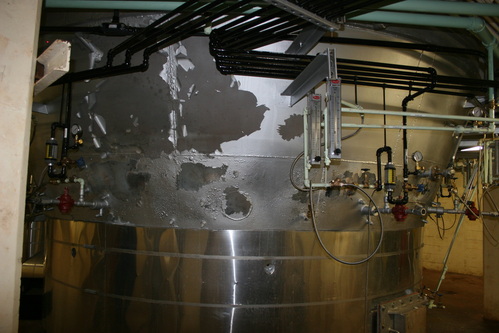Shell Hot Spots
|
Hot spots can develop on the shell of incinerators and auxiliary equipment when off-gases get behind the refractory lining of the vessel. They are typically noticed when the temperature resistance paint coating begins to peel off, bubble, or change color. Leaving these hot spots untreated can cause future problems as the off-gases will condense on the shell and create holes due to corrosion. CBE is well versed in identifying hot spots and analyzing necessary repair options for immediate patching and permanent solutions. Taking these steps will prevent or minimize shell problems in the future. |

